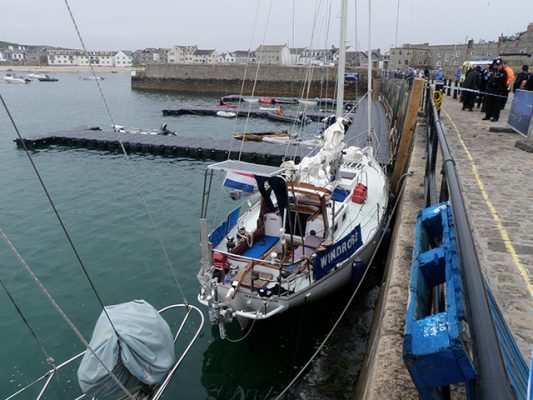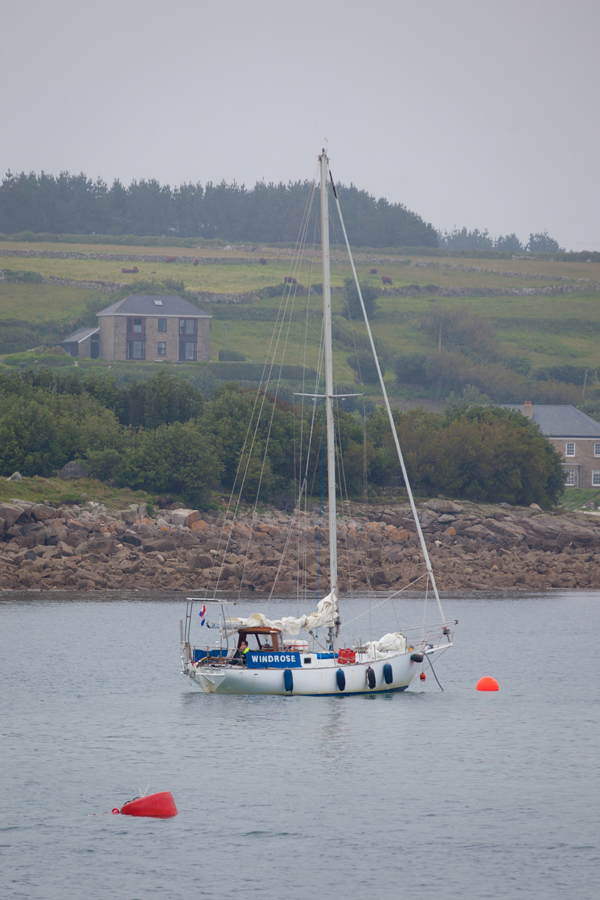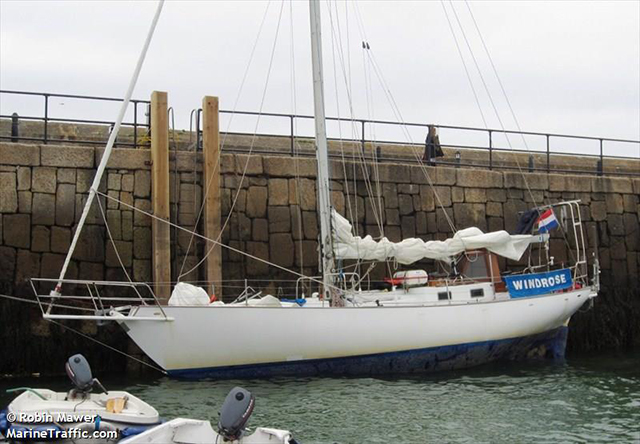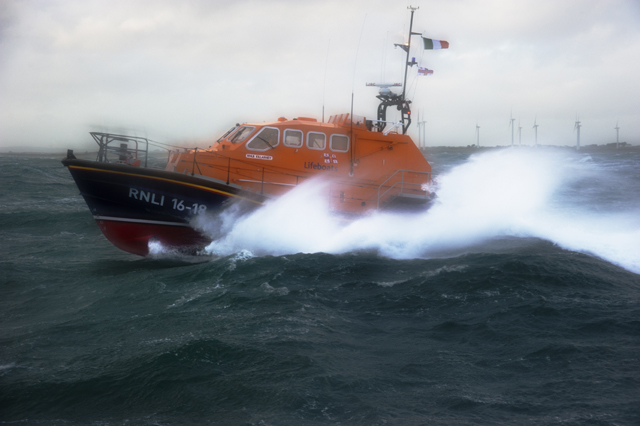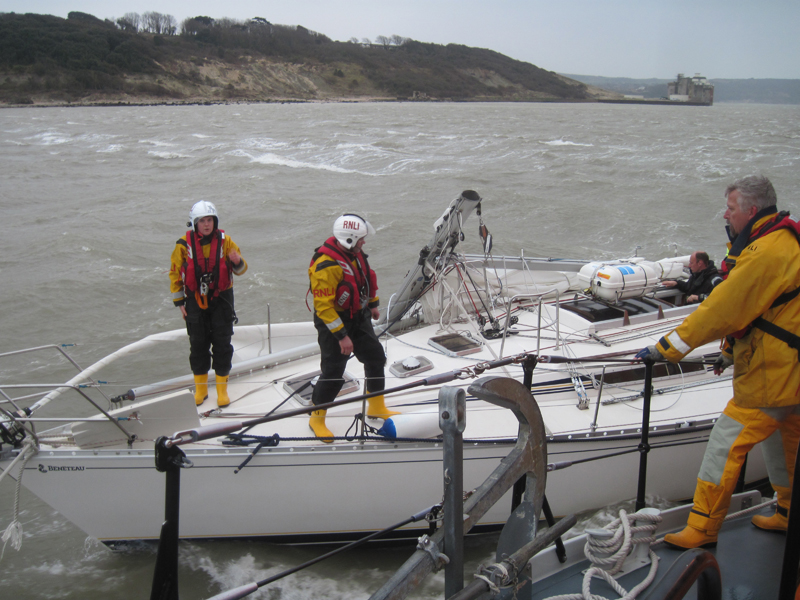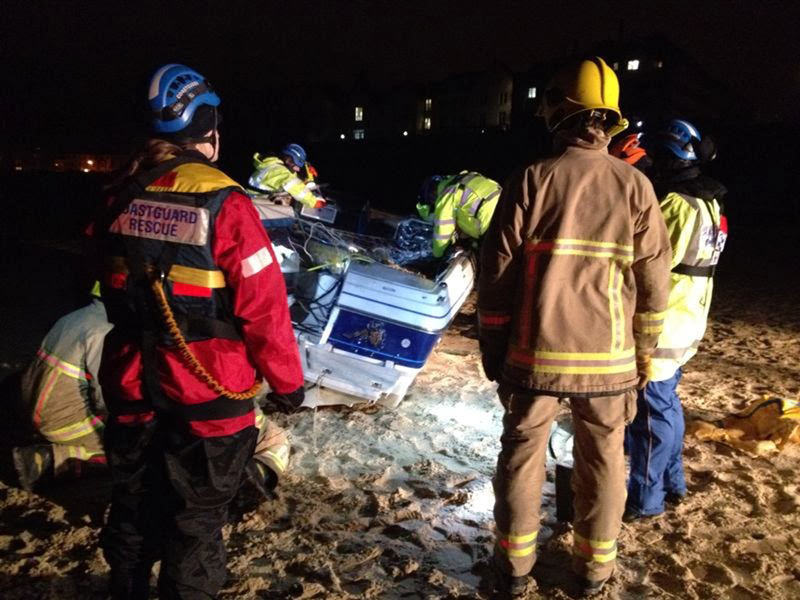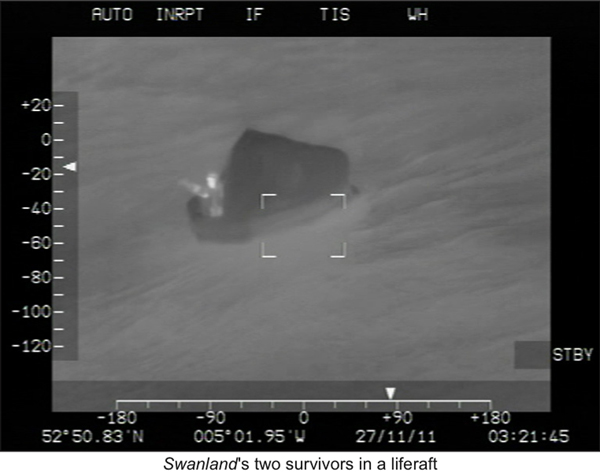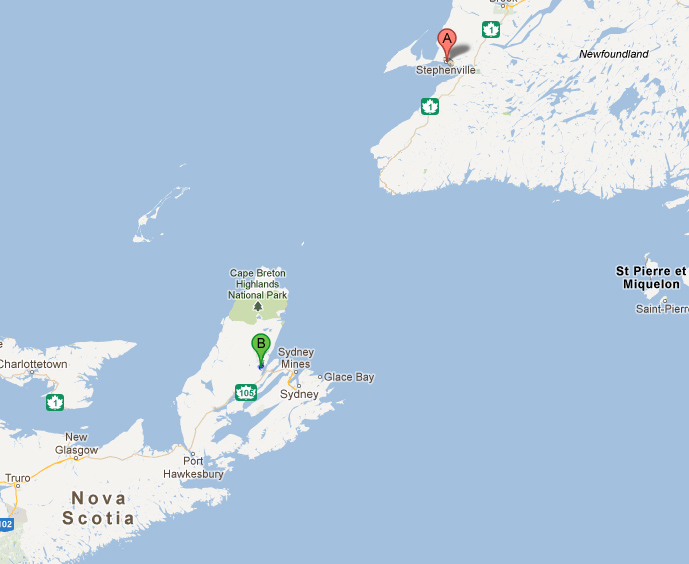A suspected drug smuggler killed himself by jumping from the mast of his yacht while Border Force agents searched below, an inquest in Plymouth has recorded.
The jury at the inquest of 62-year-old Dutchman Christiaan Woestenburg ruled that the experienced sailor deliberately killed himself by climbing the 40ft mast of his yacht in St Mary’s harbour on the Isles of Scilly then jumping to his death.
Plymouth coroner Ian Arrow recorded the suicide verdict on 6 October at the end of a four-day inquest.
The incident occurred on 17 June 2013 after Woestenburg’s 11m (36ft) cruiser, Windrose, was boarded by Border Force officers at St Mary’s quay. Border Force officers later found 124kgs of cocaine estimated to be worth ‘between £8.3million and £18million’ on the yacht.

Windrose. Credit: Devon and Cornwall Police
The yacht had been towed into shore after suffering rigging problems the previous day.
The jury were told that while supposedly sailing from Brazil across the Atlantic to his home country, Woestenburg had called Isles of Scilly lifeboat crew on 16 June 2013 for help, saying he was suffering from fatigue and feared his mast was about to collapse.
The crew went to his aid, 16 miles from the St Mary’s harbour, with two members boarding his vessel to help as the RNLI boat Duke of Kent towed the 11m yacht to port.
The court heard from Commander Richard Davis, who was then acting commander of the Border Force vessel HMC Vigilant.
He said he sent a crew of four officers to board the yacht, once it was alongside the harbour, but was not able to establish the credibility of the individual on board.
When told via radio that Mr Woestenburg had climbed the mast and jumped, Cmdr Davis said he was “very shocked.”
‘There was an awful lot going on at that time,’ he said.
‘I was in the middle of St Mary’s Sound with five crew members on board, trying to berth alongside and deal with a critical incident.
‘They told me a single-handed crew member has climbed the mast and fallen or jumped to the quayside.
‘The emergency services were called, an officer placed the casualty in the recovery position and monitored the casualty until a paramedic arrived.’
Asked whether he would have done anything differently in hindsight, Cmdr Davis said: ‘I think we did everything legally, proportionately and in good faith to ensure the safety of my team.
‘When (crew member) Lee Townsend told me he had fallen in the water, my first though was the safety of my team and to rescue Mr Woestenburg.
‘Coming back to the whole thing, I don’t think I would have done anything differently.’
The inquest heard a number of statements read from witnesses including retired farmer and keen photographer Robin Mawer.
The jury heard how he regularly took photos of boats coming and going from St Mary’s island which he then uploaded to the website www.marinetraffic.com.

Windrose being assisted by RNLI volunteers. Credit: Robin Mawer / MarineTraffic.com
After taking photographs of Woestenburg with the RNLI crew aboard Windrose, he visited the quay and spoke to Woestenburg who told him he had sailed across the Bay of Biscay and sustained damage to his starboard rigging.
He said the Dutchman said he was sailing the Windrose back to his home country.
A statement from Dale Clerk, St Mary’s harbourmaster, revealed how Border Force staff told him the Dutchman had been coming and going on deck, drinking from a bottle of beer while they were aboard his vessel.
The 62-year-old Dutch sailor suffered multiple injuries to his chest, head and body after he jumped on to the granite quay.
A statement from Mark Chapman, a Border Force officer who specialised in the valuation of imported drugs, revealed that 124 packages of suspected cocaine were found in the freshwater tank of the Windrose, weighing an approximate total of 124kg.
He explained how estimated values looked at wholesale and ‘street’ values. He said the common purity at the importation stage was around 66 per cent while the street purity after cutting agents had been added to bulk the drug out was usually around 26.5 percent.
The UK wholesale price for a kilo of cocaine was between £45,000 and 53,000, accounting for a total wholesale value of the 124kg being between £5,580,000 and £6,572,000.
However, after this amount would have been adulterated down to 26.5 percent purity, turning 1,000 gram blocks into 2,490 grams, Mr Chapman said the estimated street value of the cocaine seized from the Windrose was “between £8,322,690 and £18,032,490”.
The jury heard how Border Force officers were informed by their own intelligence unit on the mainland – shortly after Woestenburg had jumped from his yacht – that the Dutch authorities considered Woestenburg of interest for “violence, assault and weapons”, but not drugs.
Det Insp Daniel Massey of Devon and Cornwall Police told the jury he was working as a detective sergeant at Newquay at the time.

Windrose. Credit: Devon and Cornwall Police
He learned that the Dutch authorities had suggested to Border Force that there may have been “up to three persons on board” the Windrose. He said it was a “sensible assumption” that the Dutch had seen Mr Mawer’s uploaded photo and not realised they were the RNLI crew members assisting Woestenburg.
Commander Christopher Pratt, the Border Force’s Designated Person Ashore, explained to the jury the kind of training the four officers who boarded the Windrose had undertaken.
He said the training did not include just drugs, but also immigration matters, animals, cigarettes, tobacco and alcohol.
He said the agency’s work also included counter terrorism, noting how it covered “returning jihadis on small craft on the periphery of the UK”.
He said a key piece of training officers undertook was “customers behaviour indicators”, explaining that if a person was sitting “on a tonne of cocaine” he would hold a conversation with them, walk them through the vessel and watch if they appeared nervous, stumbled or sweated.
Officers were trained to look for indicators on board vessels for a picture of where the boat had been, including foreign currency, newspapers, magazines, food and navigation charts.
He said officers were trained to “read and recognise, to identify signs of stress, like voluntary and involuntary body language”.
In answer to questions from assistant coroner Ian Arrow, Commander Pratt noted that under current leglislation his officers would need a police officer to detain a person for their own welfare.
He highlighted to potential dangers Border Force officers faced, noting how some in some parts of the world customs staff searching vessels had been killed by “deliberately left traps”.
He said if officers “felt the environment was changing dramatically” they would call upon the local police to assist.
Inquest coverage courtesy of The Herald. Find the full coverage here.
Fatal mast fall in Isles of Scilly
Local harbour master says Border Force officers were on the yacht but 'categorically denies' there was a chase
Mast-fall death investigation nearing completion
Border Force found more than £12million-worth of drugs on the yacht
IPCC investigation following mast-fall death
Border Force found more than £12million-worth of drugs on the yacht
£20million of cocaine found on mast-fall yacht
Border Force officers were aboard when the Dutch skipper fatally fell
Dismasted?
Use you last bit of way to save your hull
Lessons learned after yacht sinks during grounding recovery
“We deserved to get away with a few scratches and a bit of embarrassment, not to get the boat sunk”…
Official report into the Cheeki Rafiki tragedy
The Marine Accident Investigation Branch (MAIB) report into the loss of the British yacht Cheeki Rafiki and its four crew…
Rescue ship ‘ran over’ survivors of yacht keel tragedy
Court hears plight of two survivors after keel loss
Planning and undertaking an Atlantic crossing
Thinking about an ocean passage? Here's some top tips from Atlantic Rally for Cruisers (ARC) sailors...
Clipper tragedy yacht IchorCoal to resume racing
The crew of the Clipper Race yacht IchorCoal have made the decision to keep racing following tragedy of losing their…
Man dies after capsize tragedy off the Irish coast
A man has died after spending up to five hours in the water with nine others, after their boat capsized…
Dismasted yacht rescue on the south coast
The 40ft cruiser was in danger of being swept onto the Shingle Bank
Tributes paid to speedboat tragedy teen
The family of a teenage girl who died following a fatal speedboat incident in Brixham, Devon, on Saturday, 2 May,…
Suffolk sea tragedy – man named
Peter Chambers died after setting off on a fishing trip; Two other men are missing
Final report on Padstow family boating tragedy
The MAIB final report re-emphasises the importance of wearing a kill cord when powerboating
Damning report into ‘avoidable’ cargo ship tragedy
Six lives were lost when the Swanland cargo ship foundered
Tributes pour in for Andrew Simpson following America’s Cup training tragedy
The Olympic gold and silver medallist has died at the age of 36
Seven-year sailing journey ends in tragedy
Retired surgeon drowns just 500km from home
Four drown in Scottish loch tragedy
Poor visibility and rescue service delay blamed for tragedy




